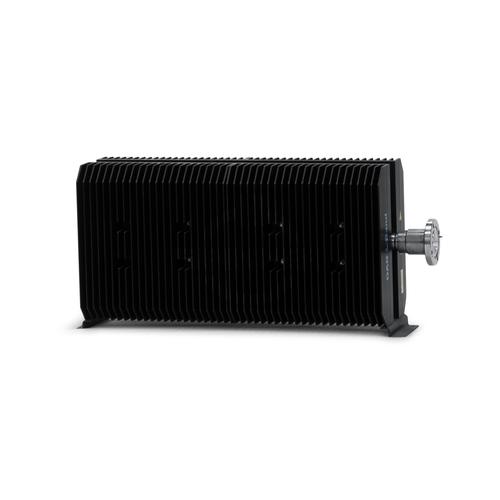SPINNER loads offer outstanding electrical and mechanical properties
The modular SPINNER system for loads offers you great flexibility in the selection of your components. It allows you to configure power, frequency range and connectors according to your individual requirements. The advantages are obvious: cost savings through standardization and reliable technical quality.
The 1600 W load DC-4476 MHz 1 5/8" EIA is placed to the end of the signal path and thus guarantees the correct impedance termination. This reduces disturbing reflections and ensures the maximum performance and quality of the overall system. You can individually combine your attenuator and adapt it to the requirements of your local installation.
The 1600 W load DC-4476 MHz 1 5/8" EIA ensures optimum protection for your highly sensitive signal transmission between transmitter and antenna on broadcast sites.
Outstanding RF characteristics, best possible passive intermodulation and VSWR
The load enables you to transmit high-frequency signals reliably and flawlessly with optimum protection of your sensitive equipment in a power range up to 1600 W.
The load offers an interface 1 5/8" EIA.
SPINNER loads can be mounted vertically or horizontally. Only in a few cases a certain orientation is required for a product and therefore explicitly stated in our product data sheets.
The 1600 W load DC-4476 MHz 1 5/8" EIA is cooled passively by convection i.e. the heat dissipation via the cooling fins. Due to the flexible mounting options, optimum air circulation and thus cooling can be achieved.
The protection class is IP 40.
Coaxial flange connectors, generally known as “EIA flanges”, are connected by a coupling element. The flange connector system complies with international standards EIA STD RS-225, 339 IEC, DIN EN 122150 and MIL-F 24044. The EIA flange connectors are excellently qualified suited for pressurized systems and for outdoor installations. 1 5/8" EIA connectors are used to link two elements of a rigid or semi-rigid high performance coaxial transmission line for radio frequency signals. Typically, these are operated in systems for very high power transmission (from kW to MW), e.g. in DAB, DVB or FM broadcast systems or in high-energy applications in research facilities (particle accelerator, plasmatron).





